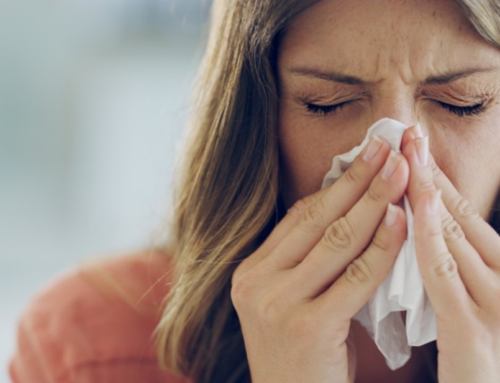Hürriyet Newspaper – December 10, 2020
Allergies, which occur as a result of the immune system reacting to a harmless substance as if it is harmful, can be seen in all age groups. Pet allergy, which is one of many types of allergies; It occurs as an abnormal response of the immune system on contact with the fur, skin or saliva of a domestic cat or dog. President of the Allergy and Asthma Society Prof. Dr. Ahmet Akçay explained the symptoms of pet allergies and gave information about allergy vaccination.
pet allergy; It is an allergic reaction to proteins found in an animal’s skin cells, saliva or urine. Most of the time, pet allergies are triggered by exposure to the dead skin a pet keeps in its fur. Any furry animal can be a source of pet allergies, but pet allergies are most common in cats and dogs. pet hairs; can collect pollen, mold spores and other outdoor allergens.
Who gets pet allergies?
pet allergy; It can occur in both adults and children. It can affect people of all ages, regardless of gender. Some people may be at higher risk. These risk factors are:
Having pets at home increases the risk of pet allergies. The risk increases as the number of pets increases.
Situations such as close contact with pets, hugging and kissing increase the risk.
Especially indoors, spending time in poorly ventilated places increases the risk situation.
-Having a similar allergy history in the family increases the risk.
Having one allergy increases the risk of developing another allergy.
*The presence of a risk factor does not necessarily mean that the allergy will occur. A person with a risk factor is more likely to develop an allergy than a person without a risk factor.
What are the symptoms of a pet allergy?
Symptoms of a pet allergy usually appear when your pet is around or shortly thereafter. These symptoms may continue even when away from the pet. The reason this; hairs remain in the air, on furniture, or on your clothes. Symptoms of a pet allergy include:
-Sneeze,
-Itchy and watery eyes
– runny or stuffy nose
– Skin itching,
– Itching in the mouth and throat,
-Cough,
– Raised, red spots on the skin, hives,
-Asthma symptoms such as chest tightness, difficulty breathing or wheezing.
In pet allergies, symptoms can become chronic. For example, you may experience long-term nasal congestion and this may not give you the impression that it is caused by a pet allergy. Many of the symptoms of pet allergies, such as sneezing and runny nose, are also similar to illnesses such as the flu or the common cold. Your doctor will pinpoint the cause of your symptoms.
How can we avoid pet allergies?
It may not be possible to completely prevent pet allergies. However, some measures to be taken can minimize the effects of this situation. These measures are:
* If you have a pet, try to minimize physical contact with it. Do not hug or kiss often.
*Do not allow your pets to enter all areas of the house. Especially try to keep it away from your bedrooms. This way you can prevent pet hair from penetrating your mattress.
*Ask someone who is not allergic to brush your pet outdoors, and do this regularly.
*Do not let your pet lick you from your face or nose.
* Wash your hands with soap and water after contact with your pet.
*After physical contact with your pet, be careful not to touch your face and eyes.
*Pet hairs can stay on carpets and upholstery for a very long time. Therefore; It may be helpful to use a vacuum cleaner with high traction. Fabric upholstery etc. clean constantly.
*Use more efficient air conditioner filters, such as HEPA filters, that can help remove unwanted allergenic particles from the air.
* Trim your pet’s nails and hair when needed.
* Minimize the use of carpets and rugs that can trap animal hairs and other allergens.
If you are going to have a pet, you should decide without having children.
Because it has been shown in scientific publications that having a pet at home before birth reduces the risk of developing pet allergy after birth. For this reason, if parents with an allergic body are considering keeping a pet at home, it would be a useful approach to have a pet at home without having children. Because if the parents have an allergic disease, it will increase the emergence of the allergic disease in the child.
Is there a cat or dog that is not allergic?
Actually not. Although it is thought that cats or dogs that shed less hair cause less allergies, allergy symptoms can be seen even with less hair, especially since cat hair allergens are very strong allergens. Pets that shed less and smell less may be preferred in terms of less allergic symptoms.
If you are allergic to your cat or dog, allergy vaccination can be done.
If there is an allergy to your cat or dog and there are symptoms of this allergy, first of all, an allergy test should be done. Allergy skin test or blood allergy test can be done. The test that gives even more detailed information is the molecular allergy test. With molecular allergy testing, it provides very useful information in showing whether the true allergy is a cat or dog or a cross-reaction. Sometimes, those who are allergic to cat hair may develop an allergy to the dog as a result of cross-reaction, and allergy symptoms may occur when exposed to dog hair. Making a decision according to the molecular allergy test while making the allergy vaccine allows for more effective vaccine administration. If the allergy to the dog is caused by a cross-reaction to the cat hair, only the cat hair allergy vaccine should be given. If a true allergy to both cats and dogs has developed, allergy vaccination against both pets will be much more beneficial.
Allergy vaccines are administered once a week for 4 months, then the interval is opened and a vaccine is administered once a month at the end of 1 year. The effect of the allergy vaccine shows itself within 6 months. With the allergy vaccine, allergy symptoms disappear, the need for medication is eliminated, and the quality of life increases significantly. You don’t need to give up your cat or dog or even horse riding. Allergy vaccine can be applied against cat, dog and horse hair and very successful results are obtained.






